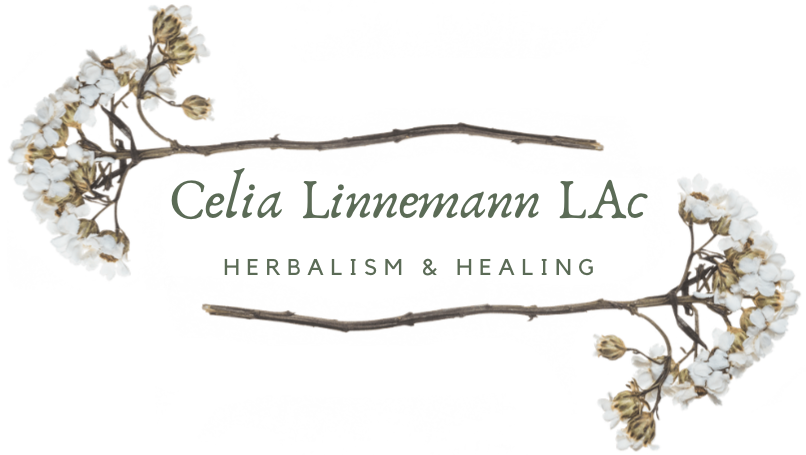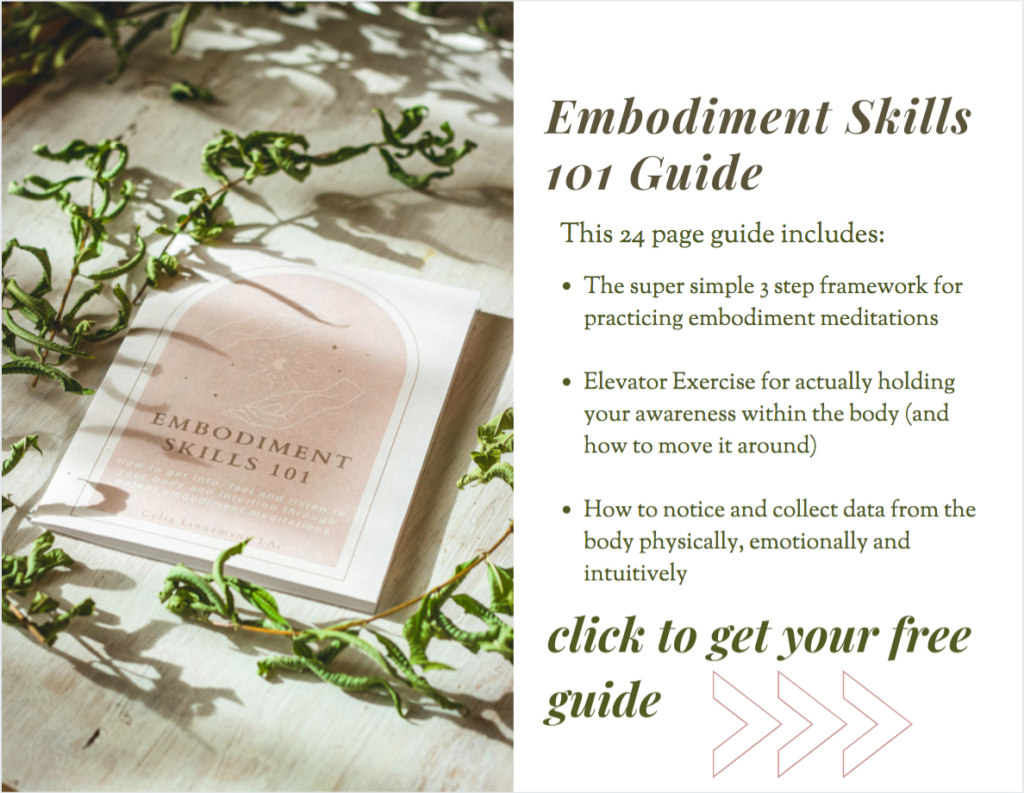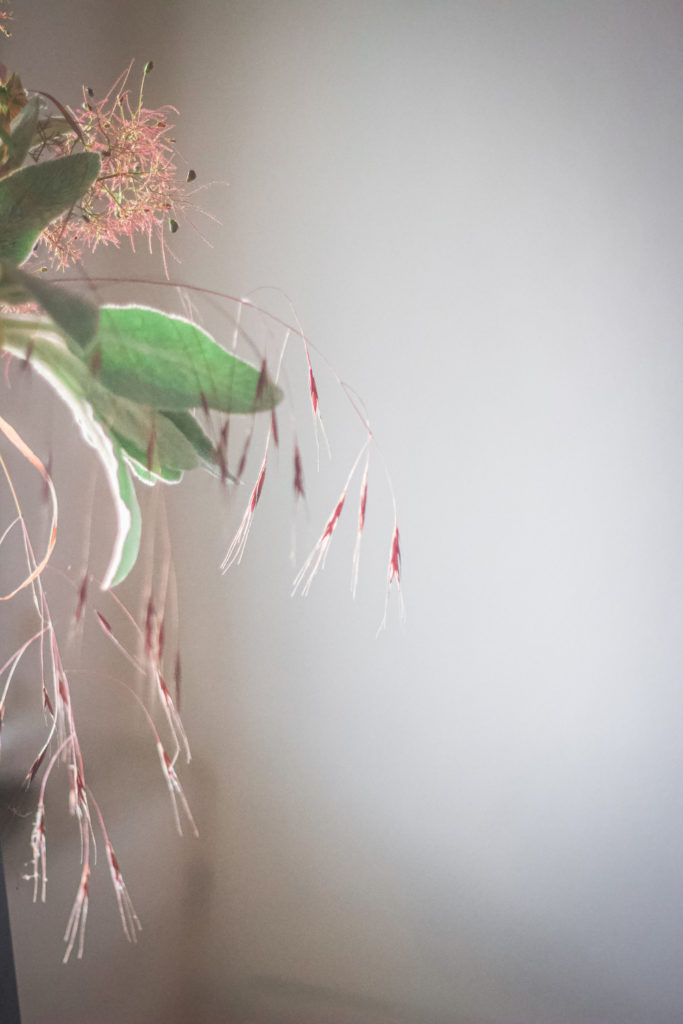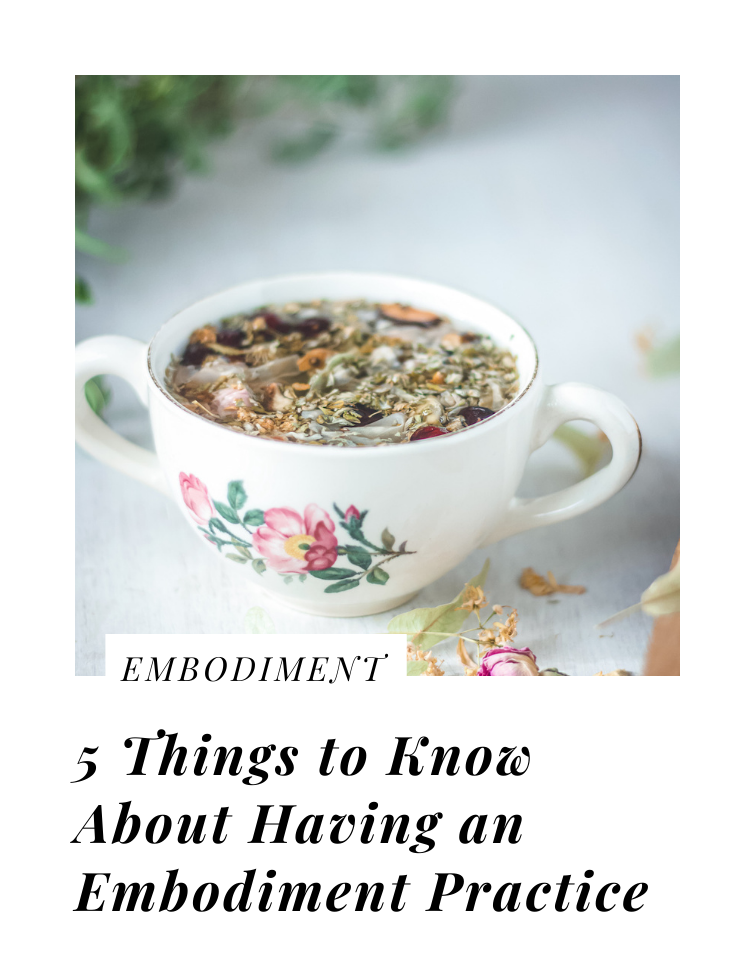How to listen to the emotions in your body
Emotions are powerful stuff! You already know how to listen to and access the emotions in the body because you naturally do this anytime you feel emotions. This is because emotions are felt within the body, not the brain. It is true that the brain will interpret emotions, and we then can make thoughts, meanings and memories about those emotional experiences, but emotions are first sensed within the physical tissues of the body.
By reading this post, I hope you will be excited to work with the emotions in your body, and I think that you will see emotions as the bridge from the physical into the your non-physical, more intuitive nature.
At the end, I will walk you through a body meditation for feeling the emotions in the body.
I will also provide a simple framework to work with emotions via witnessing and affirming. Through feeling, seeing, hearing the emotions in your body, you can create a deepening relationship with this part of yourself, without having to constantly process or rehash emotional stories. Instead, I like to let the body speak for itself and be heard.
With a little practice in embodiment, or feeling into and listening to the body, you can gain confidence to access and learn from emotions. Simply seeing and hearing emotions can help your physical body feel better, help your sense of self-esteem and self-worth, and exercise your natural intuitive capacities.
My Embodiment Skills Resource
This article is very much related to the foundations that I talk about in the free Embodiment Skills 101 Guide that I created.
Check it out on this page. You can get a copy of this 24 page guide emailed to you via clicking any of the buttons.
Connecting to my emotional body transformed my life
TW: Murder, death by accident. As a young kid, I was very much an emotional feeler. I didn’t outwardly express a lot of emotions, but I would experiment with the feeling of them internally.
I remember crying, and while sobbing, wondering, “Where do tears come from? Why does my body move this way and heave when I cry? Why can’t I make myself cry on command? Why do I cry sometimes and not others? Why do other people cry more or less than I do?”.
I would do the same thing when I was in a laughing fit. Oh, laughing felt so good and I wanted to recreate that feeling but I never could, no matter how I tried.
What mystified me is that emotions would flow through at certain times and not others. Emotions seemed to have a life of their own.
When I was in third grade, I watched a wave of crying flow through a group of girls in my class. We were standing in the hallway and something happened – I can’t remember what it was, but soon one girl started crying. I watched her, senses heightened, engrossed by the electrical feel in the air of intense emotionality. Her crying spilled over to the girl next to her, then it spread around a circle.
Somehow I was immune to catching the crying, probably because I was so enamored with observing the whole situation.
That situation was so intriguing to my 8 year old self. How and why did that happen? It still intrigues me to this day.
Yes, you can “catch” emotions. You share emotions with people all the time. That is what happens when you watch a movie, read a book, listen to a song, scroll through IG stories, connect with friends and family and so on. If you are an empath, this ability is particularly prevalent for you.
In 4th grade I was under a lot of stress and I shut down my emotionality. I really tried to suppress my emotions because I didn’t like what I was feeling. It was the best I could do, and that is totally okay – our nervous system needs to protect itself however it can.
Of course, I had a variety of emotions from time to time. It is hard to completely be devoid of all emotions, all the time. To me, emotional suppression is that I purposefully denied looking at and actively avoid feeling emotions to the best of my ability as often as I could.
This emotional suppression continues until after I graduated high school until a perfect storm brought down the dam.
I had been taking medications that really messed up with my liver, and then I had an adverse reaction to another liver related-pharmaceutical (Hep B vaccine) that landed me in the hospital (I didn’t know it at the time but I still had Lyme, which can contribute to reactions of all sorts). From a Chinese perspective, the Liver is related to a variety of emotional states, in particular Liver Qi Stagnation is connected to states of depression.
When day I got out of the hospital, I was overcome with intense sadness. I watched a news story about a girl who was abducted from a gas station where she worked at a night and was murdered.
This story shook me because I felt somehow related to this murdered girl. We were the same age, and just graduated high school. She lived an hour away. And I was a night closer at a gas station, too, where I worked by myself from 9pm – 12:30am.
When I was in 8th grade, two of my best friends died in a car accident. As they were leaving town, they swung by to pick me up. We were going to go shopping, an older sister driving. Just as the car started to back up out of my driveway, my mom came out of the house and told me I couldn’t go with them after all. I got out of the car, sulking at how unfair it was that my mom changed her mind, and they drove away. 20 minuets later they were dead (they hit a patch of black ice).
I think the story of a girl just like me who died brought up the grief and survivor guilt I had from the loss of my friends when I was 13.
At the time I grieved to the best of my ability, but like I said, I also pushed them away. But after the stress on my body and a hearing a similar story, they came flooding back. I became completely depressed, immobilized and cried non-stop for days.
It was during this time that I bought a book at a book fair about emotions called One Day My Soul Just Opened Up by Iyanla Vanzant. Each chapter was about one emotion and a story from Vanzant about that emotions playing out in her own life.
I reveled in meeting and embracing each of these emotional experiences within myself, my story and my life. It was like a homecoming. Meeting my emotional self started me on the path to reading and learning about emotions and they roles they play in my body and my life.

Always Learning about (and from) Emotions
To this day, I am still obsessed with learning about emotions. Now I get to share my thoughts about emotions with my kids. Just last night my 6 year old and I talked a lot about how it’s okay to feel whatever we feel, even if it seems overwhelming, and that we all are lovable and worthy even when we are angry or have big emotions.
My kids are empaths just like my husband and I, and we have the opportunity to model and talk about our emotions in ways that we didn’t learn while we were growing up, like how to accept emotions, how to clear and use protection, and so on. If you want to read a little about how people become Empaths, check out this article.
While I am on the topic of speaking to your kids, this video about discussing your own vulnerabilities with your kids is an important one. TW: Teen suicide. This video is not necessarily my favorite (it seems oddly scripted) but yet the point of modeling vulnerability of emotions is worth the watch.
Emotions are part of the human experience and if we let ourselves feel what we feel, we actually connect to our humanity. We can develop empathy for ourselves and others, because we’ve been there.
PLEASE note: I believe you should receive help, like therapy, and treatment when you are very depressed. Self-help books can only take you so far. I also sought medication to help me with this depression, which I used for about 3 months until I felt better.
I was fortunate that it was so short lived for me. Other people have different experiences with depression. We all need a personalized form of ongoing care. What works for one may not be applicable to another.
Thanks for listening to my own story of reconnecting with emotions. Now let’s dig into how to feel into them in the body – and what to do with what we feel.
A felt sense we all have
You already have the built-in tools and skills to connect to the intuition, the wisdom, the consciousness of the body and to listen to its voice. We all do.
You can feel and listen to emotions within the body via feeling and sensing. I call this “feeling into the body”. It is also called body meditations, embodiment or having an embodiment practice.
Clunky names aside, this is simply bringing your sense of feeling into your body with your awareness, letting it linger for a minuet or longer, then taking notice of what you feel, sense, hear, see, know. Whatever information which arrives and however it arrives is all fair game.
This is certainly not the only way to tap into listening to the body – but if it interests you, then I am here to share how I do this and how I have seen others do the same.
Reconnect to the voice of the body
It is true that you have an inherent ability to connect to your body voice, but many (or most) of us have been cut off from it in some capacity.
Modern societies don’t give us the time, tools or support to wayshow us into creating a practice and relationship of listening to our body. Nor do most of us (though some of us do – let’s be clear, this is not universal) have the intact wisdom traditions of our cultural heritages to help nurture that relationship through broad and personal applications.
Even if we want to listen to our body and the emotions within it, we often have to go to school, work and housekeep so goddamn much to simply stay afloat.
For these reasons, I approach feeling into and listening to my body intuition in a practical, grounded, pragmatic way. I have to feel it. It has to double as a grounding practice that feeds my soul and nervous system. And it has to be simple.
I am recovering from a chronic illness (Lyme) and spend my days tending to two small children (no childcare or school over here in pandemic times). I don’t have the time, space or energy to myself, let alone the ability to spend extended periods learning fancy protocols, attending retreats, reading books and the like. Knowledge is great! Education is wonderful! But I have to fit listening into my body throughout my day to day activities.
One of the easiest ways to integrate listening to your body intuition into your day is to take a few minuets to do so right before falling asleep. When my kids were still napping, I would also do body meditations while I was putting them to nap. Even after I am totally well and don’t need to nap, I still plan to use time during the day to lay down and check in with my body and being.
Emotions are a barometer
Emotions are an extremely powerful tool. They are a part of our guidance infrastructure – they tell us what is going on in our bodies and beings.
But before I go into the Emotional Body in this article, I must make sure these are known:
1. Challenging emotions are not something you manifested or brought on due to your attitude, “negativity”, being “low vibration” {insert vomit emoji here}, beliefs and so on.
There are a lot of outside stresses that can wear on our nervous systems, and trauma may also impact your emotions.
We live in a physical body that is prone to mechanistic malfunctions, the emotional body may reflect lots of things going on with our anatomy. And these things can’t always be automatically solved by simply learning about emotions or letting ourselves feel them (though emotional intelligence can be empowering, and some research shows it may indeed helpful at times).
I know I always say things like this in my posts when I talk about health or healing… We are co-creators in this life, not the sole-creator.
2. Emotions, like everything, are nuanced an individualized. There is no one way.
I do not like encyclopedia-type info about which body part hold which emotions. No, knee pain doesn’t mean I need to get down on my knees and pray more (I’ve seen that). It’s just too simplified and general to be of any use – and often harmful.
I’m not saying that emotions held within the body are devoid of any meaning. Once I had religious trauma and fear held within my right thigh. Does that mean that right thigh pain is always related to religion? Hell no (pun intended; it was a fear of hell I had as a child).
If there is an emotional relationship within my physical body that info needs to come from my own body itself. And sometimes, sayings about the body have some meaning. Like living with a toxic person can really cause a pain in your neck. But not all the time. Maybe you just slept wrong.
When there is an emotion-physical body relationship, remember that there are also a whole universe of systemic, holistic physical reasons why that is the case, too. Some of the emotions held within the body decoders bypass the fact we have issues with our body we need to tend to, too.
3. Trauma may come up when working with emotions. Take care of yourself and seek appropriate outside support and personal care strategies. Don’t do anything you don’t feel ready or comfortable with.
4. This is your body – do what feels right for you.

The Bodies of our being
There are 4 layers to our being that I work with.
- Physical Body
- Emotional Body
- Mental Body
- Energetic/Spiritual Body
As I talk about in the Embodiment Skills 101 Guide, these layers are not the only parts of us, nor are they the only way to look at the being.
For example, another way I look at the layers of ourselves is the physical body, surrounded by the etheric body, surrounded by the astral body, surrounded by the spiritual body (and onwards).
To me, I call these layers of ourselves “bodies” because they have a certain level of self-organization that is district from the other layers. No part of us is separate from the others, however. The physical body contains parts of the emotional body, mental body, energy body and spiritual body and visa-versa.
The main reason I speak about these layer of ourselves as “bodies” is because I see them all being as important as the body we tend to give the most attention to, our physical body.
To me, it is important to sense these layers of yourself, like the emotional body for instance, as being as relevant and real as your own flesh and blood. So much more of you is online about what is going on for you and your place in the world if these invisible areas of yourself are given credence.
In addition to paying attention to all layers for yourselves specifically for cultivating awareness, they are useful to connect with for mundane survival purposes (like making decisions), healing, exploration, creative and diagnostic purposes.
Emotions come out of the body
Emotions originate in the tissues of the body and are interpreted in the brain. There are body maps of emotions, definitely do a little googling if you haven’t seen them.
I see that pop culture and science still reiterates that emotions are part of the brain, and it is high time we get that straight. UGH. That outdated belief keeps thoughts ruling over emotions…and thus keeps up continually disconnected to ourselves.
Intuition, dreams and emotions are firstly part of survival
Whenever I talk about intuition, dreams, emotions, being an empath or anything similar, I must stress that these sorts of “spiritual” topics are firstly for survival. Survival both of the individual and for the species.
Being intuitive (or empathic) is not morally superior.
Having a spiritual awakening does not mean you are morally superior, either.
It is true that being in touch with your intuition may engender a more mutually beneficial relationship with the spirit realm, if that is even a part of your personal cosmology. For example, the spirit realm may try to give you messages via intuition (and more often, dreams).
But in the most basic levels, intuition is to help alert you of potential possibilities, opportunities or dangers. And intuition does not have to be at odds with “evidence based” or scientific minds. In fact, intuition and dreams are a leading source of scientific discovery.

Emotions are extremely important tool for wellbeing
The modern, mainstream world is cut off from emotions, and it is truly a shame because it causes all of us a lot of pain and, well, shame.
And sadly, on an individual level, it starts with generations of lack of support for attachment parenting. Culturally, I feel it started long, long ago, with the demise of living in accordance with the divine feminine and Earth.
This is where I myself can get bogged down with emotions about emotions, because trauma travels in DNA, passing from generation to generation, potentially degrading the quality of life in each iteration as it compounds (no, time does not heal ALL wounds). In our personal lives as individuals,
BUT you must remember – and embody – that if you are empathic and feel into trauma or wounds, you can also feel into the goodness and joy of the world around you, your ancestry, past lives and so on.
After I felt the trauma held in my right thigh from my 8 year old fear of burning in hell for all eternity, I felt a lovely, lovely memory of being enamored with a math problem in a way that only a child can be (6 x 6 = 36, in case you are curious). They are both in there.
Why listening to emotions from the body is important
There is a framework I continually find throughout my exploration of feeling into the non-physical, invisible bodies.
Bringing awareness into the body via the felt-sense contributes to:
- Assisting, healing or comforting the physical body
- Affirming or healing the sense of self-esteem and self-worth
- Strengthening intuition
This applies to listening to body emotions as well.
Firstly, listening to emotions can help us heal, feel grounded or whole on a physical level. Emotions are an integral part of our entire body, namely nervous system, endocrine system, immune system and much more (see Candace Pert’s Molecules of Emotions).
Secondly, listening to emotions can assist you with personal healing, healing of self-esteem, belonging, self-worth and so on. Essential, it helps you connect to who you are.
Thirdly, listening to emotions can help you tune into your intuitive sense for guidance and connection to something greater than your everyday self (could be a higher self, Spirit, the Divine/God/the Universe – whatever fits into your personal beliefs and cosmology).
I think that working with emotions at any level is extremely comforting and freeing. Emotions can be very triggering, too. One key is to seek support, go slow, and continually support your nervous system in ways that are empowering for you.
Key to working with Emotions via Body meditations/feeling into the body
As I alluded to above, there are a few reasons why emotions can be hard to work with.
- Emotions can feel bad
- Emotions are non-linear and hard to “see” and access sometimes
- Culturally, many of us have been cut off from emotions and punished for feeling
Emotions are kind of wild. They flow like waves in sporadic and often unpredictable ebbs and flows. The spread like a fire in the wind. Emotions are NOT linear.
Emotions seem to have a life force of their own. I don’t think this is exactly true…but, I think you know what I mean. Emotions have a strong electric, physical imprint within the body. And they can be felt as wounding, pain, suffering, bruising to our self and our soul.
Emotions have a LOT of power (which is why advertisements and the media sell so much using emotions). They strongly impact the nervous system, our sense of self and safety in your body.
Emotions are where the invisible interfaces directly with the physical, and the physical can strongly influence emotions.

Lack of cultural emotional intelligence
Even though emotions are so impactful, they can be a little challenging to work with. This is for a number of personal, collective and larger cultural reasons. It would take days to speak about how emotionally repressed we are as modern people as a whole.
But to sum it up, multiple cultural reasons have made us disconnected to emotions like religion, capitalism, health care, education, child rearing and democracy itself. This is not universal as I have met people from different cultures from different places around the world who have more connection to their emotions, and take the time to express and heal them within a supportive personal, familial and collective setting.
Since having kids myself (and prior to that, working with kids in a variety of settings), I see how we have had multiple generation so suppressing and worse, punishing, the emotional expression of kids down to newborn infants.
I highly recommend continual emotional intelligence education. We need it so much. Even if you feel like you are pretty tuned into your emotions, I personally suggest to keep up on emotional research because it is helpful to be exposed to different voices and modalities regarding emotions. This is a deep, deep, deep cultural wounding most of us have to contend with. Seek support along the lifelong journey.
The wild nature to Emotions
Even beyond the incredible cultural emotional impediments, emotions can still be tricky to work with simply by their unpredictable nature.
- Emotions are not always obvious. They are connected to thoughts, but more often reveal themselves though images, songs, thought fragments, intuition, memories.
2. Emotions will guide you around the body in non-linear, sporadic ways.
3. Emotions only know NOW. This becomes obviously demonstrated when thinking about PTSD. Even though you know you are here, an old memory, thought, feeling can arise as if you are in a time in the past.
4. They may feel hidden or take a long time to unfold, or they come flooding in a micro second.
5. They range from elating bliss to crushing fear, or all-consuming grief, rage.
Working with emotions flourishes with practice
Emotions do well with being seen and heard. They need to have time and patience to be worked with.
Developing a relationship. The relationship helps us on the three levels I always talk about:
- First, it helps us connect physically
- Secondly, it helps us heal our self-esteem, inherent worth and right to be ourselves
- Thirdly, working with emotions via body mediations builds our intuitive skills and relationships
Feeling into the physical body, emotions and intuition
Once you have learned to get your awareness inside your body and move it around, you may want to try to go to spots in your body that call to you or feel some level of dis-comfort.
Gather your awareness and take a few breaths. Scan your body and go to a place that is bothering you or is calling to you. Bring the elevator there to let it hold your awareness. Breathe into it and explore around it, through it, an inch around it and 3-4 inches (or more, that is just a starting place) around it off the body, just like you did for the knee and elbow in the exercises above.
Notice what this place feels like.
Feel the emotions coming from this place, or associated to this or around this.
Notice anything that comes to your mind as thoughts, images, knowings, and to your physical body as sensations, emotions. This is intuition. It may not be clear or make sense. But then again, it may. Take note and record it in a journal, if you’d like.
It may take a while to feel this next thing I am going to mention, but it also may not…you may already know this and do it all the time:
You can get images, thoughts, knowings and of course emotions and physical sensations directly within the physical tissues of the body. This is what I mean as utilizing the body for divination.
Imagine you are sinking your awareness into your lower right leg, in a tight, achey spot. You breathe into this area and explore around it. You connect to the physical sensations you feel there. Then you inquire about the emotions around here. Some seemingly random thoughts float into your mind; you take note.
But when you listen in a little more closely, the images, thoughts, people, places that pop through your consciousness feel lower than at eye level; they seem like they are hanging around your lower right leg area. You also felt some physical sensations in the lower leg when you had those intuitive thoughts.
That is what it may look like at the beginning of working with your embodiment intuition. Or perhaps you already have intuition like this.
The foundations of emotional inquiry via the body
Oh, there do many ways to feel into your body via body medications aka embodiment practices. This is just an example.
Follow your own body. You got this.
BEFORE YOU BEGIN: If you are feeling challenged from the emotions that are coming from your body- because they can be very, very scary, angry, sad, confusing and just plain stressful and troublesome – know that you can stop or take a break.
This is a normal and real response. This is part of your body’s ability to speak with you. And it is very intelligent to do so!
You may need to seek support via therapy, body work, talking to a friend. Personally, find ways to support yourself that make you feel safe and calm – tend your nervous system via herbal teas (Skullcap is always nice), herbal oil massage (I’m NOT talking about essential oils but herbs extracted into oil. Lavender oil is my favorite for helping to manage emotions), going out in nature, journaling, or whatever else you like to do.
Exercise: Feeling into the emotional body
If you are interested in feeling into the emotional body, you can do so during the same embodiment session after feeling into the physical body, or a different session. (pssssst I have these written out at the end of the free 24-page Embodiment Skills 101 Guide you can get a copy on this page).
For the sake of example, I am going to write this as if you were continuing on with the same embodiment session above, first exploring the physical body and them exploring the emotions from that physical area.
Now that you have connected to the physical spot in your body on a physical level, let yourself feel any emotions from that spot (Or wherever they come from – you might not get a clear sense of where emotions are coming from and that’s okay).
- Ask yourself, “what emotions do I feel?”. Ask the spot, “what emotions do you feel?”.
- Notice ANY thing that comes into your mind: images, people, songs, random things. Take note and keep following your images, thoughts, feelings, random snippets of info, whatever. They may seem like totally unconnected things and you may feel distracted, but this is your intuition coming though.
- You very well may get a clear emotion held in the spot or your body.
- You may not get a clear idea of what the emotions are. That is fine and normal – try to release expectations to “get” something from this. However, the stress and frustration about not getting any intuitive clues through feeling or inviting the feeling of emotions may be part of the intuition.
- Think about the random snippets coming though and feel the emotions associated with them. For example, a song may have lyrics that tell you something that you can reflect upon.
- Do your best to name and acknowledge the emotions. Even it it is vague or confusing, focus on what you think is the most accurate answer.
- Try to narrow down your emotions to the 5 basic emotions: fear, anger, sadness, joy (an excited, high energy happiness) and love. *Some notes about emotions: *Intellectual states like overwhelm and confusion are not emotions in and of themselves and require a little digging. Some feelings coming from your body (or wherever) may be about interpersonal encounters, such as Jealousy, envy, longing, embarrassment, trapped, suspicious, hurt, wounded, lost, insecure and boredom. You can try to investigate if you can get them to a more basic emotional level, by asking how they make you feel. *These complex emotions stemming from interpersonal things (or cultural, ancestral, ect…) may also be more about what your biology is feeling rather than your emotions. If you feel them, investigate what emotions they are connected to. They may also be pointing to something interpersonal, like a pattern. It is okay if these come up, go with it.
- Take 3 breathes while holding that feeling that particular in your mind, heart and body to strengthen your connection. An alternate way to do this is to hold the feeling while counting to 17.
- You can stay here as long as you’d like. It feels good to have a reason why otherwise your brain will lose focus, so state your reason. It could be to explore the emotions from the body, to observe where your mind is wandering via intuition, or for a goal like to relax or heal (although you don’t have to push it, just invite it).
- Finish by saying each of these for one full breath: I see you (and see it), I hear you (and listen to it), I feel you (and feel it), I love you (open your heart to it) and finish with thank you (and send it honoring and reverence from your heart).
- Take 3 energizing breaths to end the body-emotions feeling exercise and transition into the rest of your day.
This is a practice I do daily, if not more.
Sometimes I will go a while without listening to my body, but ideally I’d do it daily. Over time this becomes a) much easier and most importantly, b) a powerful intuitive and healing tool.
Thoughts in Closing
No lie: I could talk about emotions all day, everyday. This article about feeling emotions in the body is barely scratching the surface.
The most important thing is that you practice feeling into the body, and that you practice listening to the emotions however they arise.
Most of the time emotions come in snippets, random thoughts, song fragments, an image flash, a fleeting memory. When you experience these types of things coming up during your body meditations aka embodiment practices, break open a bottle of champagne because you are on the right path.
After years of practice, I now expirence certain parts of my body telling me how they feel, whenever they way. My cranial sinuses often tell me: I’m sad.
I am always surpirsed, because the rest of me does not feel sad at all. But I listen nonetheless and thank it for telling me how it feels.
No, I do NOT feel compelled to fix or solve the feelings. EMOTIONS ARE NOT A PROBLEM TO BE FIXED.
Remind yourself that time and time again.
They can point to parts of our life or world that need our attention. But not always. Again – emotions in and of themselves are NOT the problem. They are the barometer. They are giving you a read out of the pressure of the system that is you. The “problem” (if any) is not the barometer. The barometer is delivering info, that is its job.
Thank the barometer (the emotional body) for reporting the info. And thank yourself for walking over to the barometer to pay attention to its read out. You could’ve ignored it. You could’ve done any number of other tasks. But for whatever reason, you checked in with the emotional body.
Take note of what that means to you, what you learned, how you feel, and anything else that comes up.
Happy feeling,
Celia


















One Comment